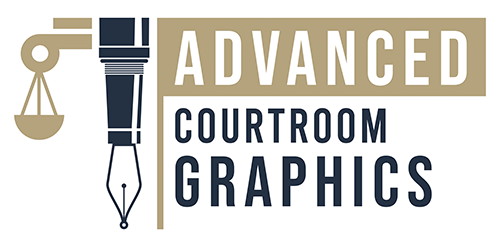The Rise of Visual Forensics
Evidence animation has transformed the legal landscape. By combining art and technology, lawyers present complex concepts in ways that are easier for judges and juries to grasp. Animation makes the invisible visible, fostering clarity in the courtroom.
The Power of Seeing: Why Animation Matters in Court
Visual evidence engages the audience’s attention. It captures emotions and conveys details that words alone cannot express. Animation allows jurors to see what happened in a clear, compelling manner, leading to a deeper understanding of the case.
Beyond Still Images: The Impact of Dynamic Evidence
Static images often fail to convey the full story. Animation, however, can illustrate events frame by frame, showing dynamics like speed, direction, and timing. This adds a layer of context that still images simply cannot provide.
Setting the Stage: Defining Evidence Animation and its Applications
Evidence animation refers to digitally-created visual representations of events or mechanisms relevant to a legal case. It can represent car crashes, product failures, crime scenes, and medical procedures. This tool can bridge the gap between complex facts and jurors’ understanding.
Case Study 1: Car Crash Reconstruction
Detailed Reconstruction: How Animation Clarified the Accident Sequence
In a highly-publicized car accident case, animation was key. It vividly re-created the crash, showing speeds and trajectories that witnesses struggled to explain. The jury could follow the exact sequence of events, making the evidence more impactful.
Expert Testimony: Animation as a Tool for Clear Communication
Expert witnesses used animated visuals to support their testimony. This collaboration helped demystify intricate details of the crash, making them accessible. The animation proved to be a crucial companion to their explanations.
The Verdict: How Visual Evidence Influenced the Jury’s Decision
The verdict favored the prosecution, in part because of the compelling animation. Jurors reported that seeing the event unfold created a stronger case. Visual evidence can influence perception and ultimately lead to more informed decision-making.
Case Study 2: Product Liability – Unveiling Design Flaws
Uncovering Hidden Dangers: Animating the Product’s Mechanism
In a landmark product liability case, animation revealed design flaws in a consumer product. By showcasing how the product functioned, jurors understood the risks involved. This type of visual presentation made complex engineering concepts understandable.
Expert Analysis: Visualizing the Sequence of Failures
Experts used animations to track failures within the product’s design. By showing how one flaw led to another, the animations clarified the link between design and safety. This visual storytelling enhanced the overall argument.
Settlement Implications: The Role of Animation in Negotiation
The animation’s impact extended beyond the courtroom. It influenced settlement negotiations, prompting the company to reconsider its position. By highlighting potential liabilities through visuals, it accelerated the settlement process.
Case Study 3: Homicide Investigation – Visualizing the Crime Scene
Bringing the Scene to Life: Animation’s Role in Crime Reconstruction
In a murder trial, evidence animation played a crucial role in crime scene reconstruction. The animated representation of events helped everyone understand the timeline and actions taken by the defendant.
Challenging Eyewitness Accounts: Animation’s Impact on Testimony Credibility
Eyewitness accounts can be unreliable. The animation provided a clear narrative that sometimes contradicted these accounts. This created doubt about their accuracy, affecting the jury’s perspective.
Legal Implications: How Animation Strengthened the Prosecution’s Case
For the prosecution, animation solidified their argument. It presented a visual story that reinforced their claims and guided jurors toward a guilty verdict. The animation was crucial in making a complex case more straightforward.
Case Study 4: Medical Malpractice Litigation
Complex Procedures Simplified: Animation’s Role in Medical Explanations
In a medical malpractice case, visual animations clarified complex surgical procedures. Surgeons used animation to illustrate the steps involved, making it easier for jurors to understand standard practices versus errors.
Demonstrating Negligence: Visualizing the Errors in Treatment
The animation illustrated how specific actions deviated from acceptable medical practices. This visual aid emphasized the negligence of healthcare providers, making the argument more persuasive.
Impact on the Jury: Animation’s Role in Medical Malpractice Cases
Jurors reported feeling more confident in understanding the medical details due to the animation. It simplified intricate matters that could easily confuse, leading to a clearer judgment.
The Future of Evidence Animation in Legal Proceedings
Advancements in Technology: Improving Accuracy and Realism
As technology evolves, so does the accuracy of evidence animation. Innovations allow for more lifelike recreations that mirror real-life events. This progression enhances credibility and can sway jurors.
Ethical Considerations: Ensuring Fairness and Objectivity
While animations are powerful, their use raises ethical questions. Ensuring animations are neutral and not misleading is essential. This balance is necessary for a fair legal process.
Actionable Tips for Using Evidence Animation Effectively
- Engage Experts: Collaborate with skilled animators familiar with legal applications.
- Focus on Clarity: Avoid clutter in animations; keep visuals straightforward.
- Practice Integration: Seamlessly weave animations into testimonies for maximum impact.
Conclusion: The Evolving Landscape of Legal Visualizations
Key Takeaways: The Benefits and Challenges of Evidence Animation
Evidence animation can clarify complex cases and enhance understanding. While it presents many opportunities, it also requires careful consideration of ethics and accuracy.
The Future of Justice: The Continued Role of Animation in Courtrooms
As animation technology advances, its role in legal settings will likely grow. This method can transform how juries perceive and understand complex cases, leading to more informed decisions.
Resources for Further Research: Where to Learn More about Legal Animation
- Books on Forensic Animation: Explore titles focusing on legal applications.
- Online Courses: Enroll in courses that teach about visual evidence in law.
Incorporating evidence animation can reshape the courtroom experience, improving clarity and understanding throughout the judicial process.
